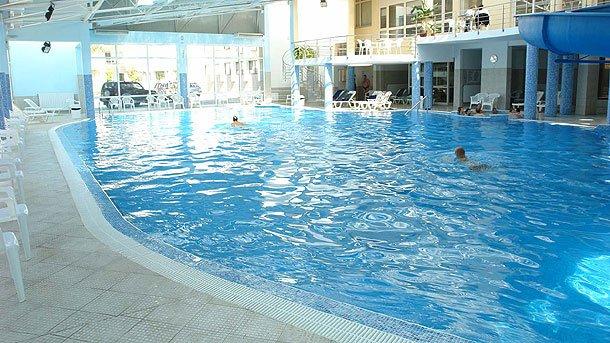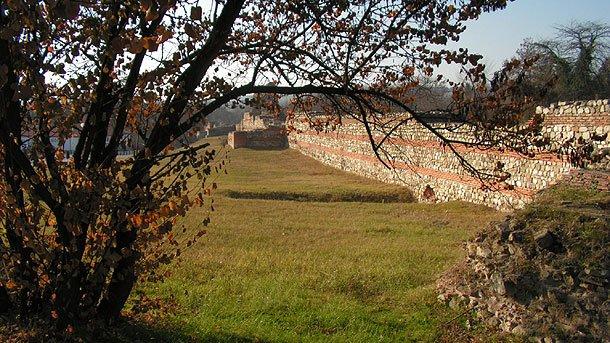If you prefer warmer climes even in winter, Hissarya is your kind of place. The average temperature during the cold months is around 1 degree C. At first glance nothing out of the ordinary, there are places where the thermometer is well above zero. But Hissarya is the kind of town that always has a surprise in store: the miracle of its mineral water – there are 22 hot water springs here and each with its own composition and temperature. A veritable paradise for all people, who are fond of classical spa treatment, modern aqua-therapy and wellness. And they are a temptation even to the lovers of winter sports, who find that Hissarya is very convenient as a starting point for skiing.

When one walks in the streets of Hissarya or in its parks, one is invariably gripped by its atmosphere of serenity and tranquility that is so untypical of the dynamic times we live in. An amazing feeling, just 170 kilometers from Sofia and only 40 from the regional city – Plovdiv. The town lies stretched out in the lowlands of Lower Thrace. And all around are open spaces. But if you feel like snow or mountains all you have to do is look up into the distance – to the North is Sredna Gora Mountain, right behind it – the Balkan Range. To the South in the distance is the outline of The Rhodope Mountain. The snow capped peaks are dazzlingly white; there is something for everyone here. During the day skiers can turn their attention to the snow covered slopes and in the evening – to the mineral water. As a matter of fact, water has always been part of Hissarya’s history with many legends surrounding each mineral spring. This invaluable gift of nature has cured the aches and pains of many illustrious as well as of thousands of ordinary people… The fame of the miraculous waters spread far and wide.

In its entire history, going back centuries, the town has never fought a war, even though it has been tempting to all kinds of rulers – Thracian, Roman, Byzantine, Ottoman… One of the town’s oldest names – Toplitsa – is connected with a legend in which military maneuvers and water springs intertwine. According to this legend the soldiers grew thirsty and started calling out “Toplitsa! Toplitsa!” (from the word toplo meaning warm), expecting to receive warm spring water, whose temperature keeps for a long time, as it comes from the hottest mineral spring here – 51 degrees C! In different epochs and under different rulers the town has been called Augusta, Diocletianopolis, Alexiopolis… Ancient chronicles, however are unanimous – it was the dazzlingly white town. Curative and religious sanctuaries called nympheums and fortification systems sprang up around them. Tourists nowadays can take a walk around the remains of the ancient town and the fortress. The fortification has 44 towers, in places the walls rise to 13 meters in height. Four big gates opened up to the ancient town. Erosion and the tides of time have modeled one of them into a stunning composition which has become known as the Camels. In the town’s centre, next to the spring called Lilly-of-the-valley rose the residence – the most imposing public building of ancient times. Next to it are the Diocletian thermae, revetted with white marble.

“The dazzling, white marble town” with the magical water, as chronicles have called it, still attracts tourists with its sanatoria, mineral pools and multitude of new hotels, one of which was bestowed the award Spa Hotel, 2013 by the Bulgarian Hotel and Restaurant Association. Another town symbol is the Colonnade. Built in 1960 and as an exact replica of a Roman colonnade, it depicts the eight ancient gods of health: Iaso, Panacea, Hygieia, Asclepius Telesphorus, Epione, Machaeon and Podalerius. The symbols of the basic mineral water crystals are depicted on the colonnade vault.
It was in Hissarya that the first chemical analysis of the water of five local mineral springs was conducted. A book of rules for the use of the Hissarya baths was published in 1882, and the first spa treatment in the country was organized. The town was declared a national resort in 1957. The curative waters of the 22 springs help in the treatment of numerous ailments – of the eyes, the skin, gynecological problems, as well as problems of the locomotor system. It is not possible to enumerate them all but to see the magic effect the water has, one must visit…the Museum collection of kidney stones.

Otherwise the town and its environs offer different trekking routes: to the Thracian cult complex Starosel, to the ancient astronomical observatory in Staro Zhelezare. Even nowadays history can give archaeologists a startling surprise. In the summer of 2013 artifacts were unearthed not far from Hissarya, in the Kozi Gramadi locality, from one of the ancient Thracian capitals of the Odrysian Kingdom. The region also offers cycle tourism, trekking along the paths of Sredna Gora Mountain, the Rhodopes and the Balkan Range. Hissarya is a favourite spot for visitors from the country and abroad. Because once you have visited it, you are sure to come back.
English version: Milena Daynova